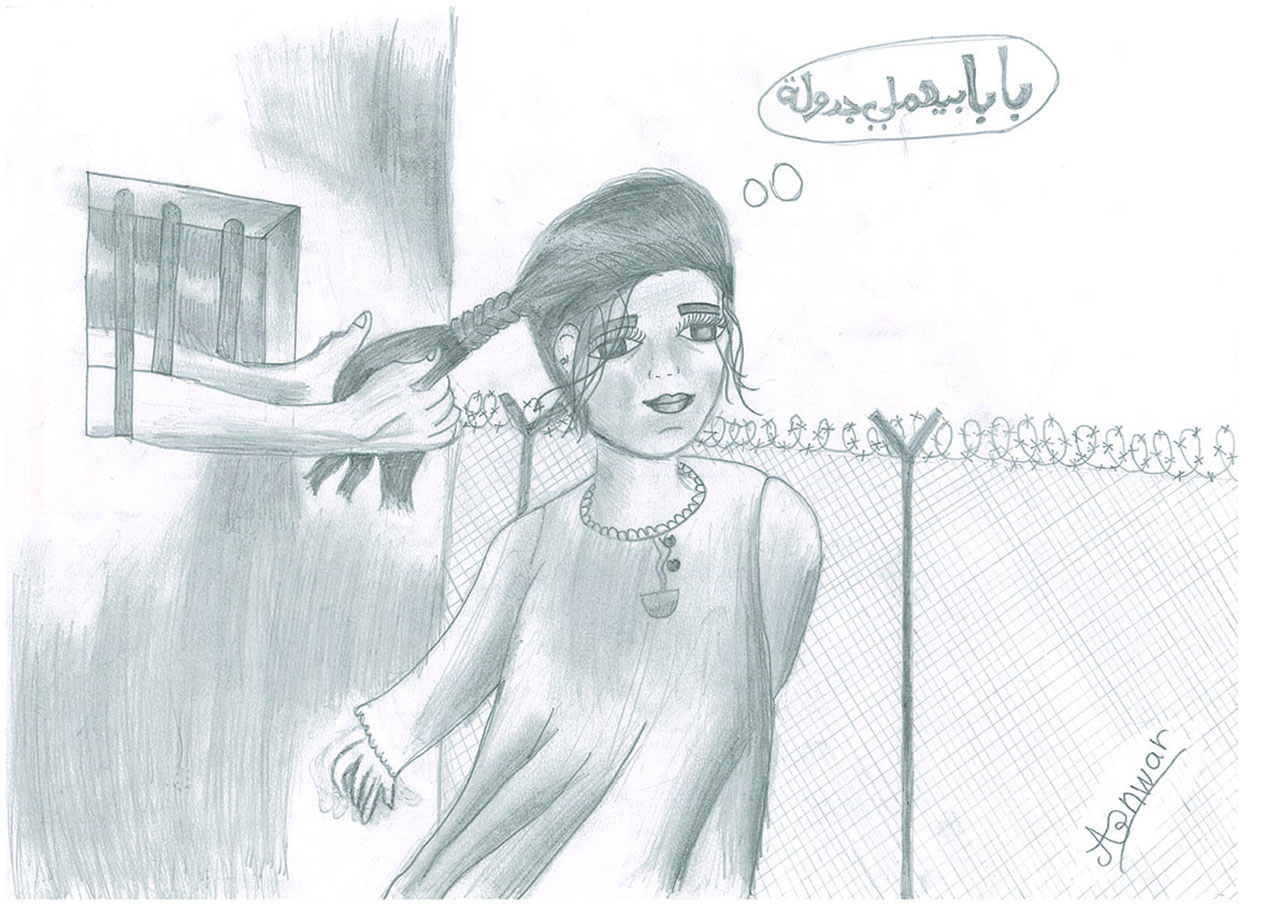Hope for Palestine
Academics at Liverpool Hope University have showcased an exhibition of artwork by Palestinian children as part of an ongoing collaboration between the university and communities in the West Bank
Online exhibition Hope and Resistance: Through Palestinian Children’s Eyes shows art created by children aged between nine and 15 at two schools in the border city of Tulkarm. Their images highlight the reality of life on the West Bank, as well as the children’s hopes and dreams for the future.
The young people were asked to respond to the question: what do you want to tell the world about being a young person living in Palestine? The children’s artistic responses show depictions of tanks, soldiers, tears, barbed wire, families imprisoned and lives in turmoil.
For Tracy Ramsey, Liverpool Hope’s professional tutor in youth and community work, the exhibition is a heart-rending reflection of the paradox she has encountered on trips to Palestine since joining the university in 2013.
Speaking about a trip to the West Bank in 2018 with four colleagues and a number of students, Ramsey says: “There’s something about the people and their love for life and zest and energy, and they seem so determined and upbeat. And, you know, you have a really good time. You can find yourself in hysterics laughing alongside people… but then it’s hugely impactful.
“The first time we visited we had a really tough trip back through the airport. And we sat on the plane, the four of us reflecting on the horror, and there were certainly tears. We were upset, thinking of all the people we’d leave behind, particularly the kids and what their hopes and dreams are, and how they cope with brutality and their lived realities.”
These feelings of reflection sparked a need to respond, but Ramsey and her colleagues were keen to communicate their experiences of the West Bank in a way that empowered those living there to use their voice.
“When we think about the world of academia, it can be quite exclusive,” says Ramsey. “I’m not being critical of it, but a lot of journals you have to pay for or subscribe to. They are out of reach in some ways to the general public and what we felt that we were trying to do as a team was to push forward with getting information about the occupation in Palestine to the general public.”
The decision, as Ramsey’s colleague Kellie Thompson describes, was to create an “exhibition without walls”, allowing children to document their experiences aside from political sensitivities about the occupation, which can be shared online with people across the world.
Ramsey says: “What we wanted to do was not dispute the fact that there is a major political issue and impact – it is fundamentally political – but what we’re trying to do is work with young people to enable them to come to voice, and through their artwork and their pictures to raise people’s consciousness and to [show how] young people are living in this particular part of the world. And this is their experience.”
One image, drawn by a 14-year-old girl, shows her father plaiting her hair through the bars of his prison cell. Another, drawn by an eight-year-old boy, depicts a smiling family harvesting olives while machines of war lurk menacingly in the background. Another, created by a nine-year-old boy, appears to show a soldier in the foreground and bodies lying on the ground to the left.
“They are really powerful,” says Ramsey. “When you think about seven and eight-year-old children drawing pictures of guns and trying to save olive trees it brings home the realities. In some ways our young people in Palestine are encouraged to engage in the politics of it, of course, because that’s part of their history and their legacy there.”
Staff and students who have visited Palestine have been Christian, Muslim, Jewish and people of no faith. Ramsey says: “As organisers we are opposed to all forms of racism, antisemitism and orientalism.”
She adds: “The occupation is clearly a very contested political situation and it’s such a difficult thing to talk about it. We recognise that there is a fine line to walk.
“All we can do is try to be honest messengers, to present these unique voices, and to encourage people to look, question and to read other resources so that they can forge their own opinion on the conflict.”
To view the exhibition in full visit hopeforpalestine.co.uk

Leave a reply
Your email address will not be published.